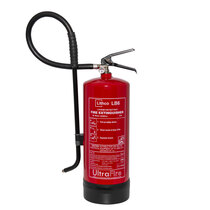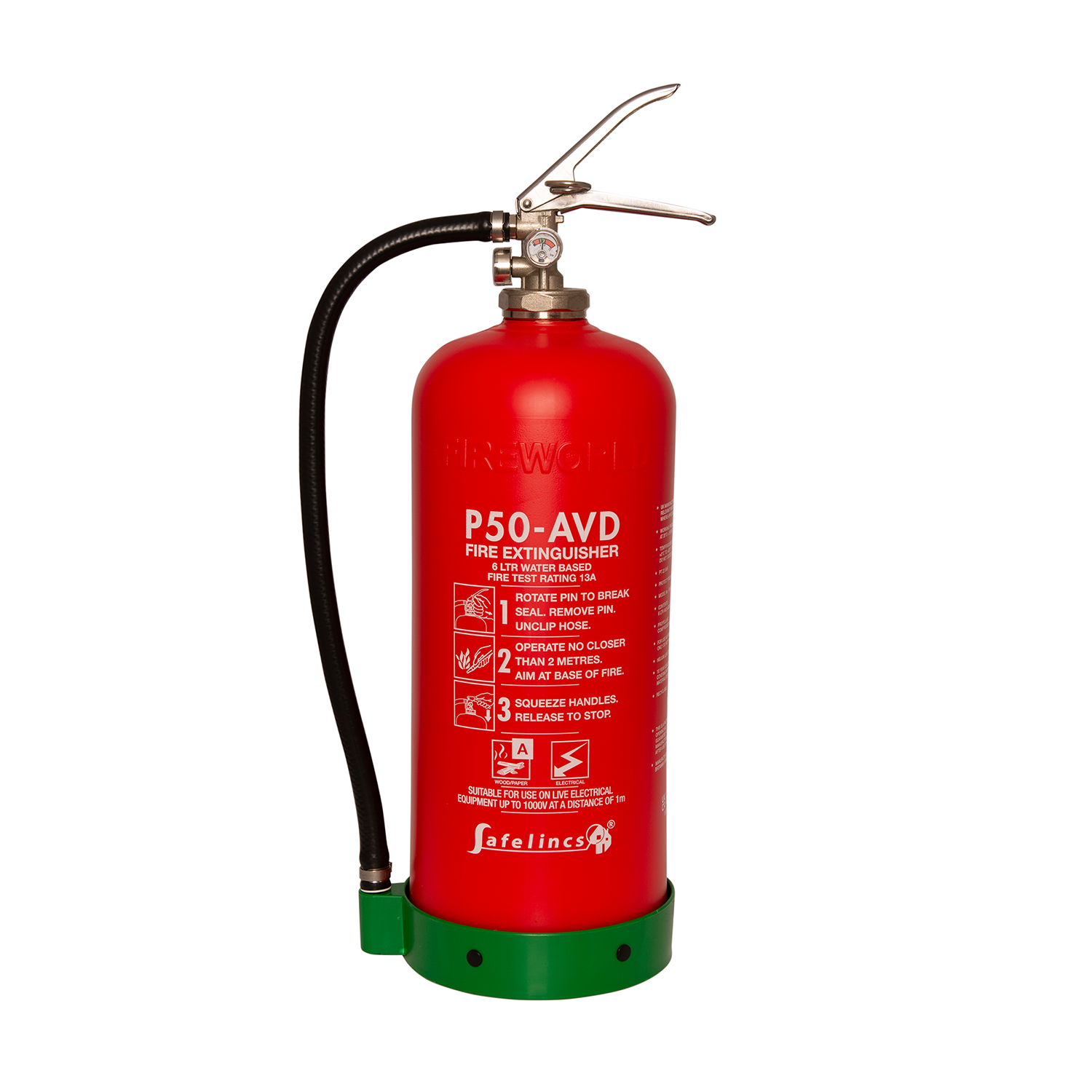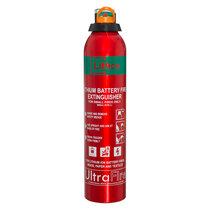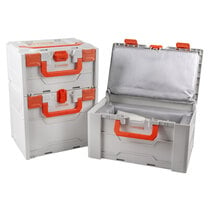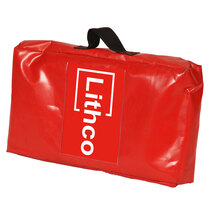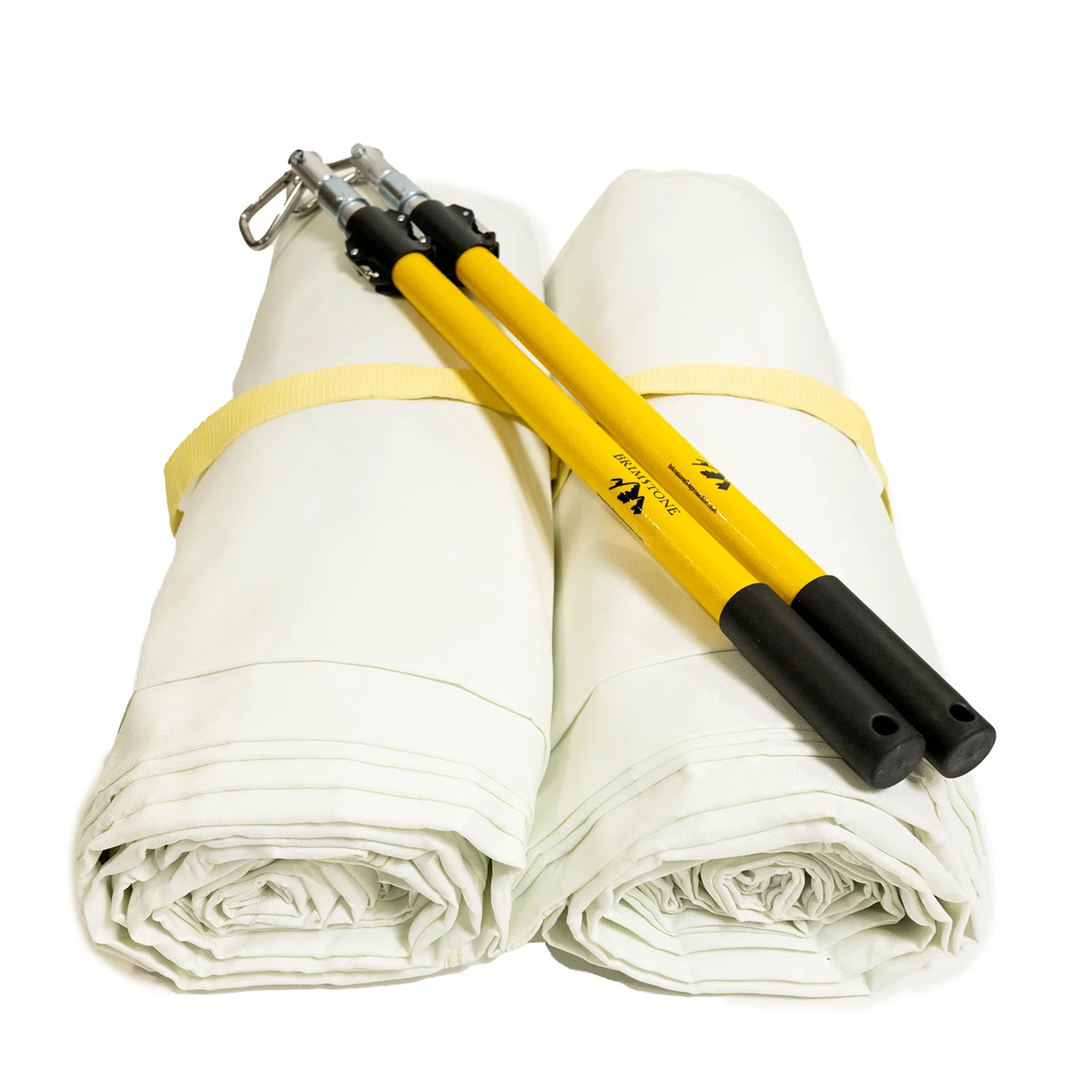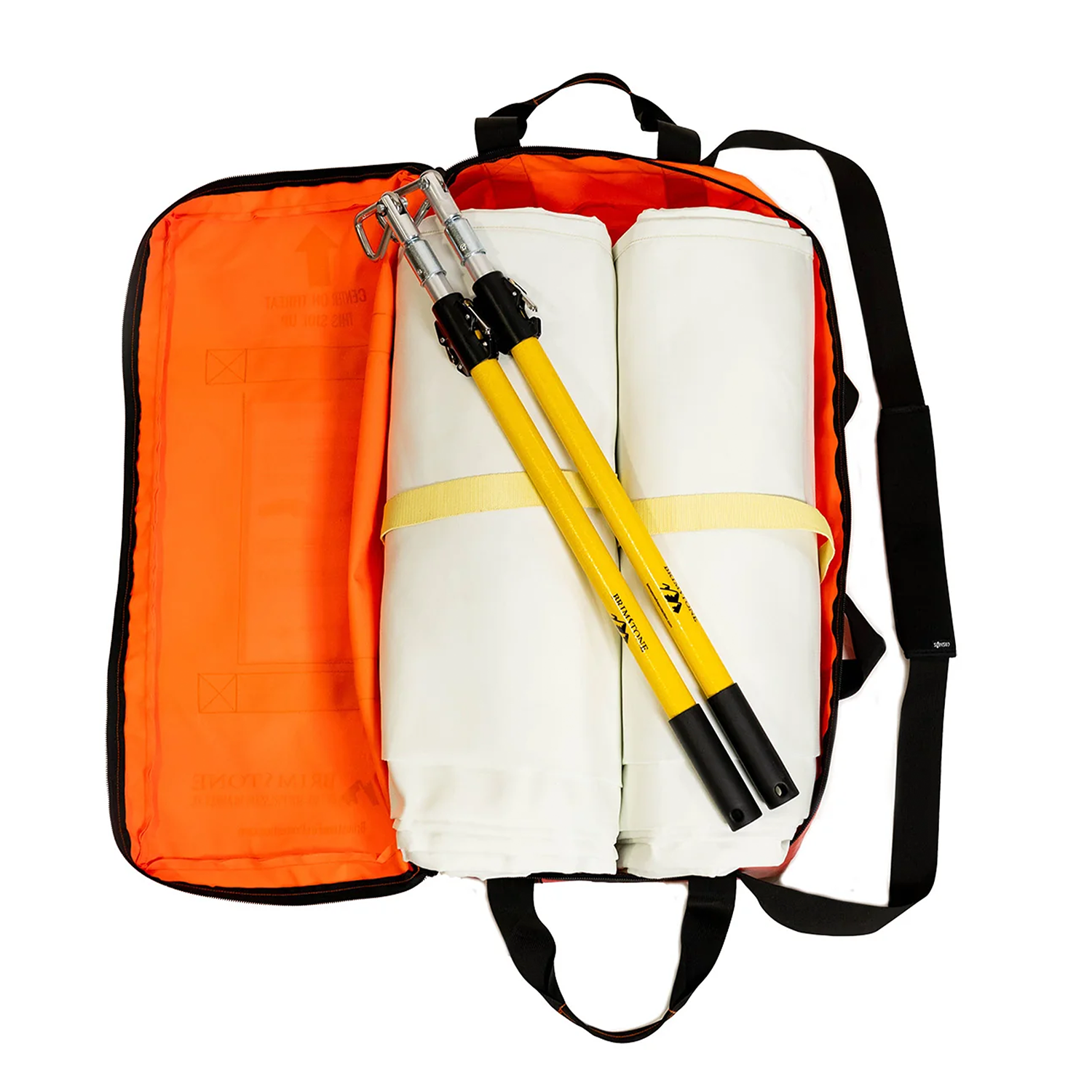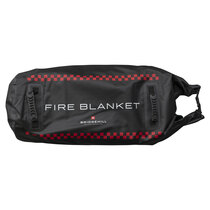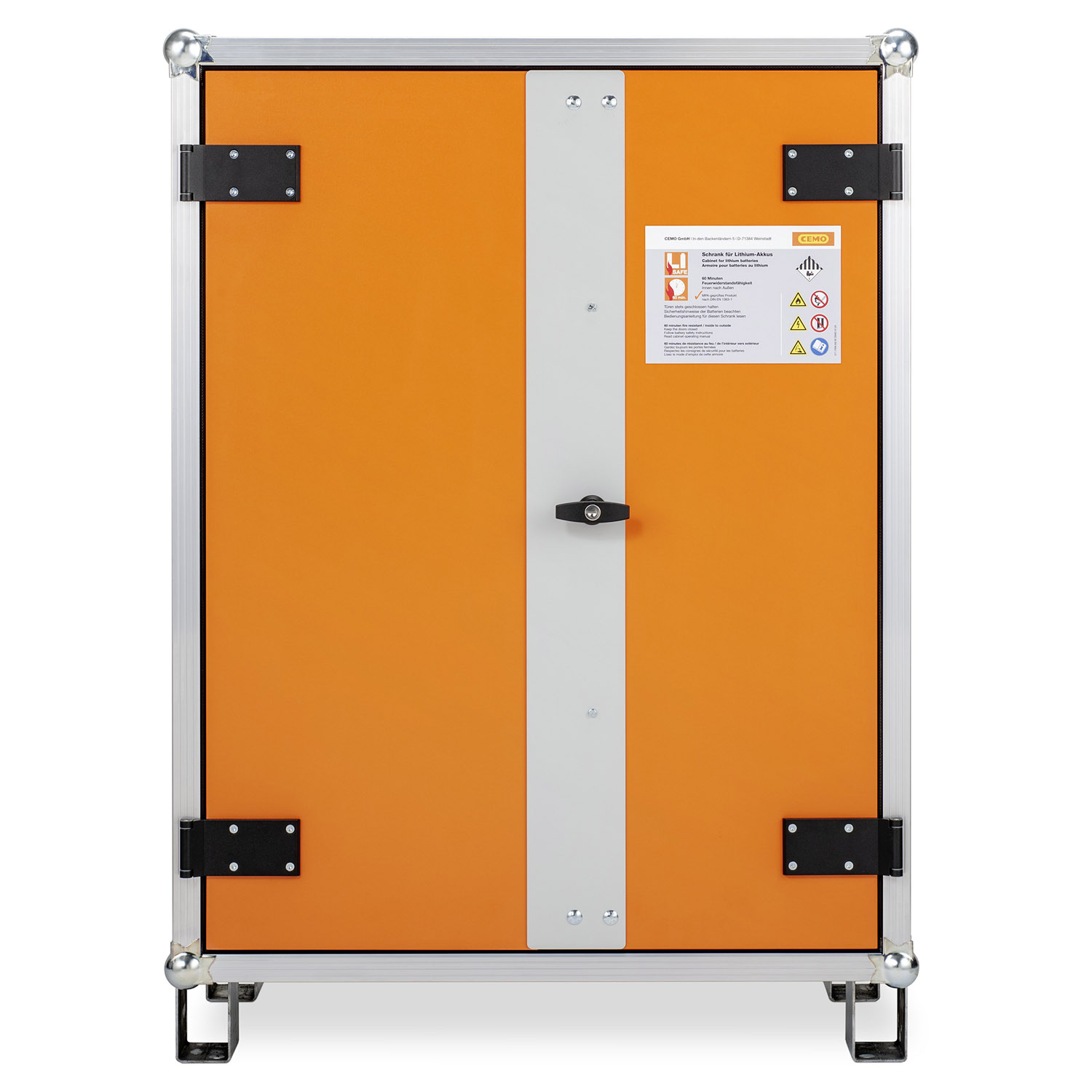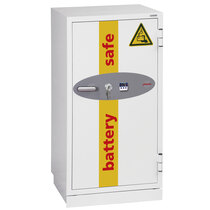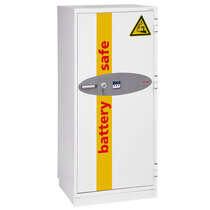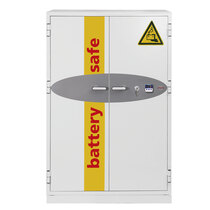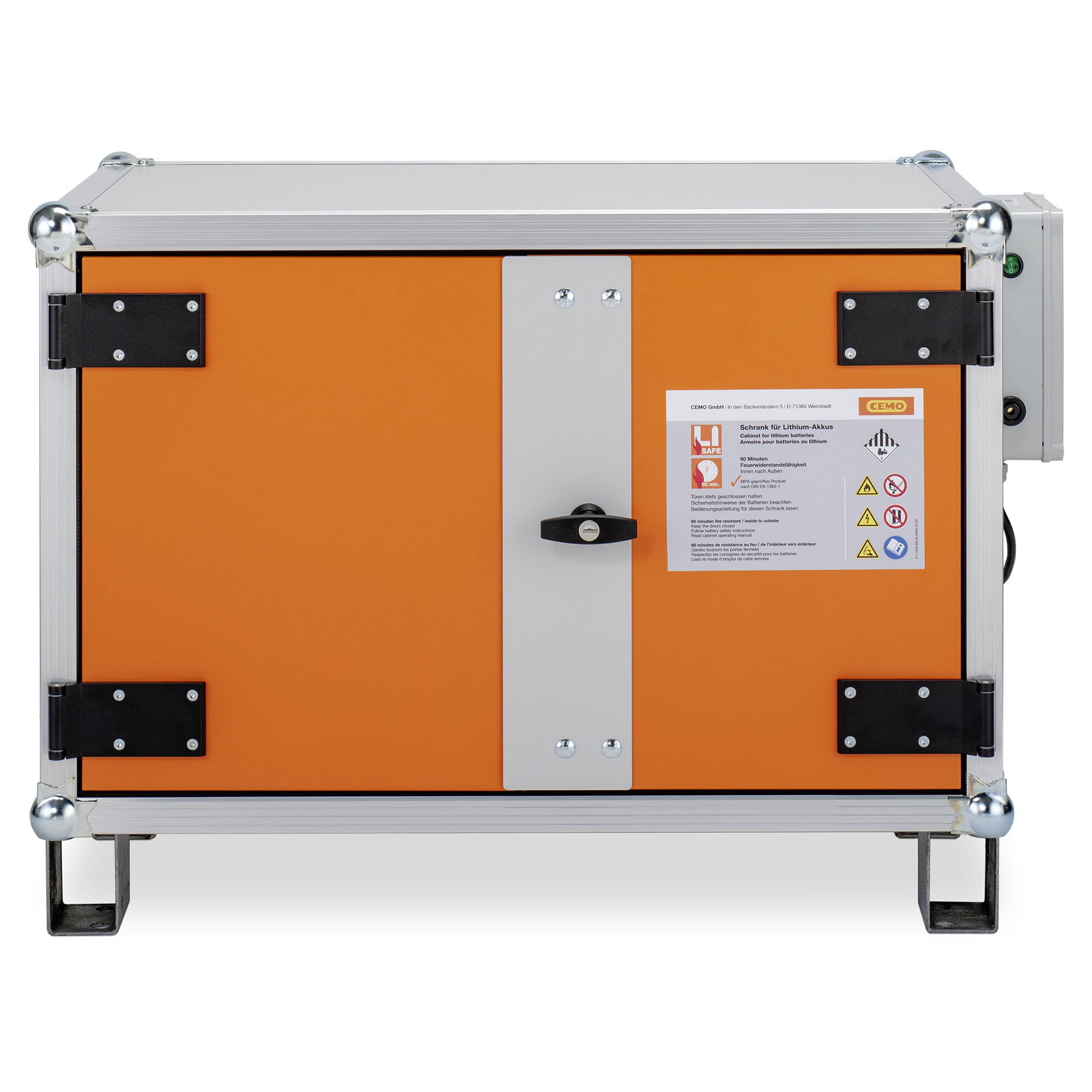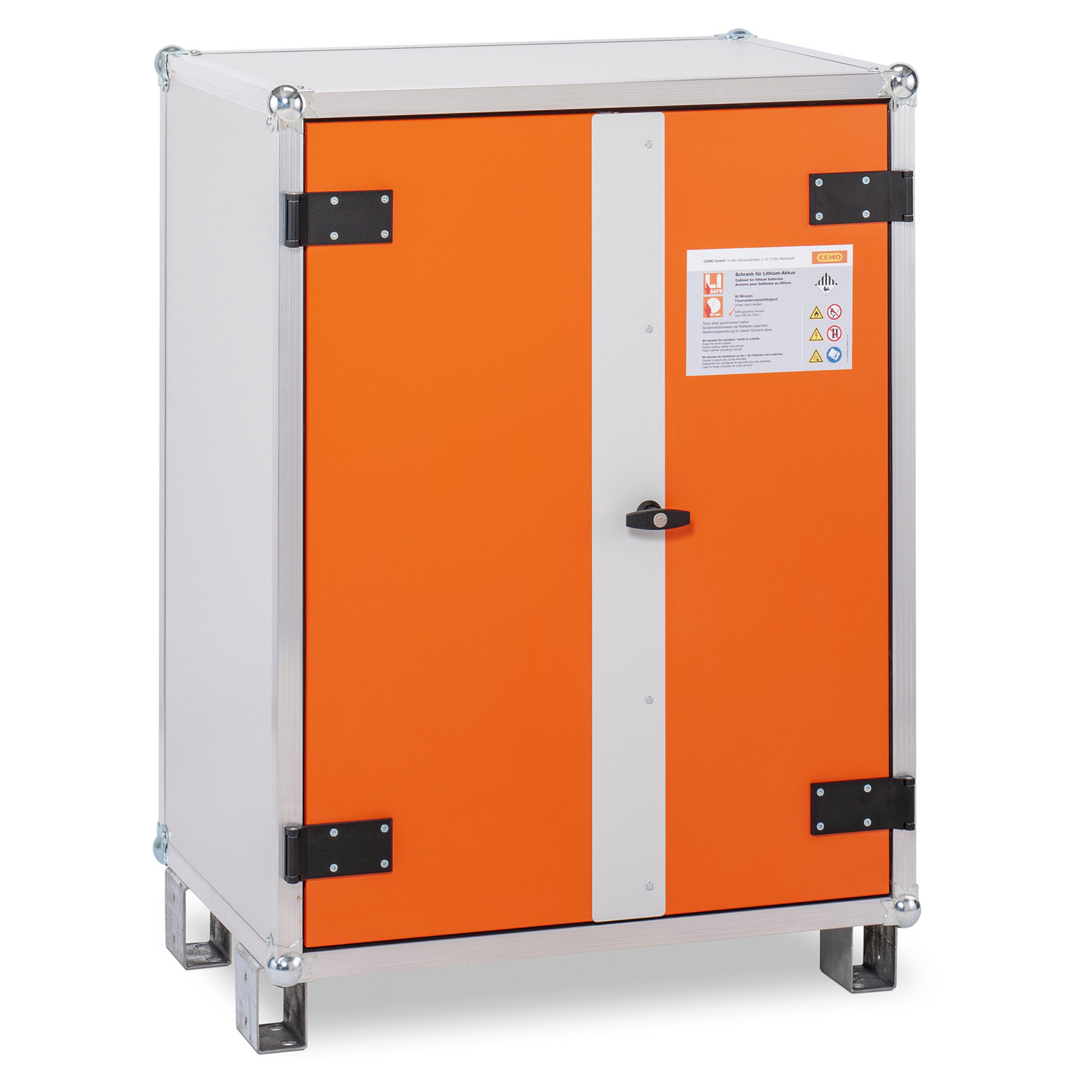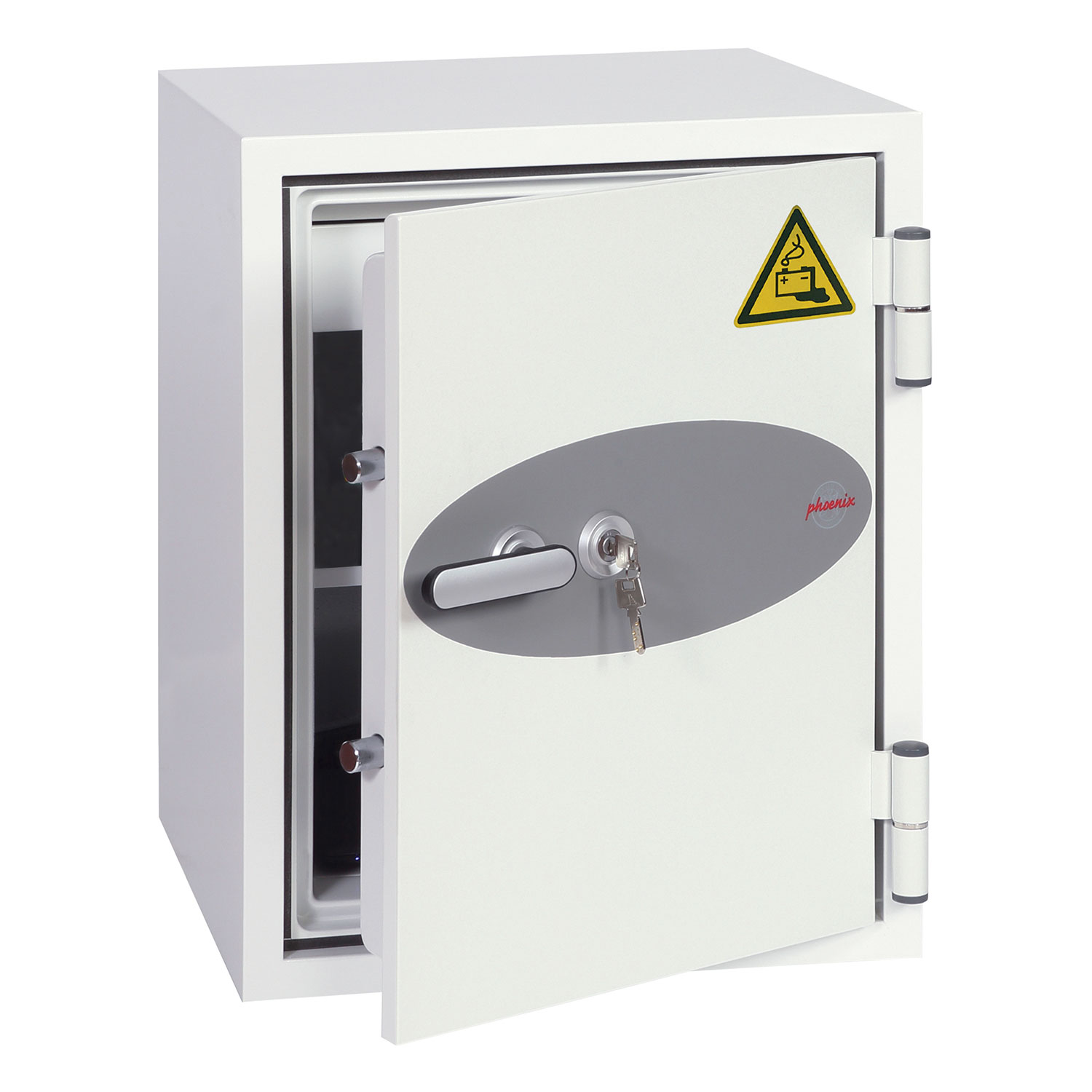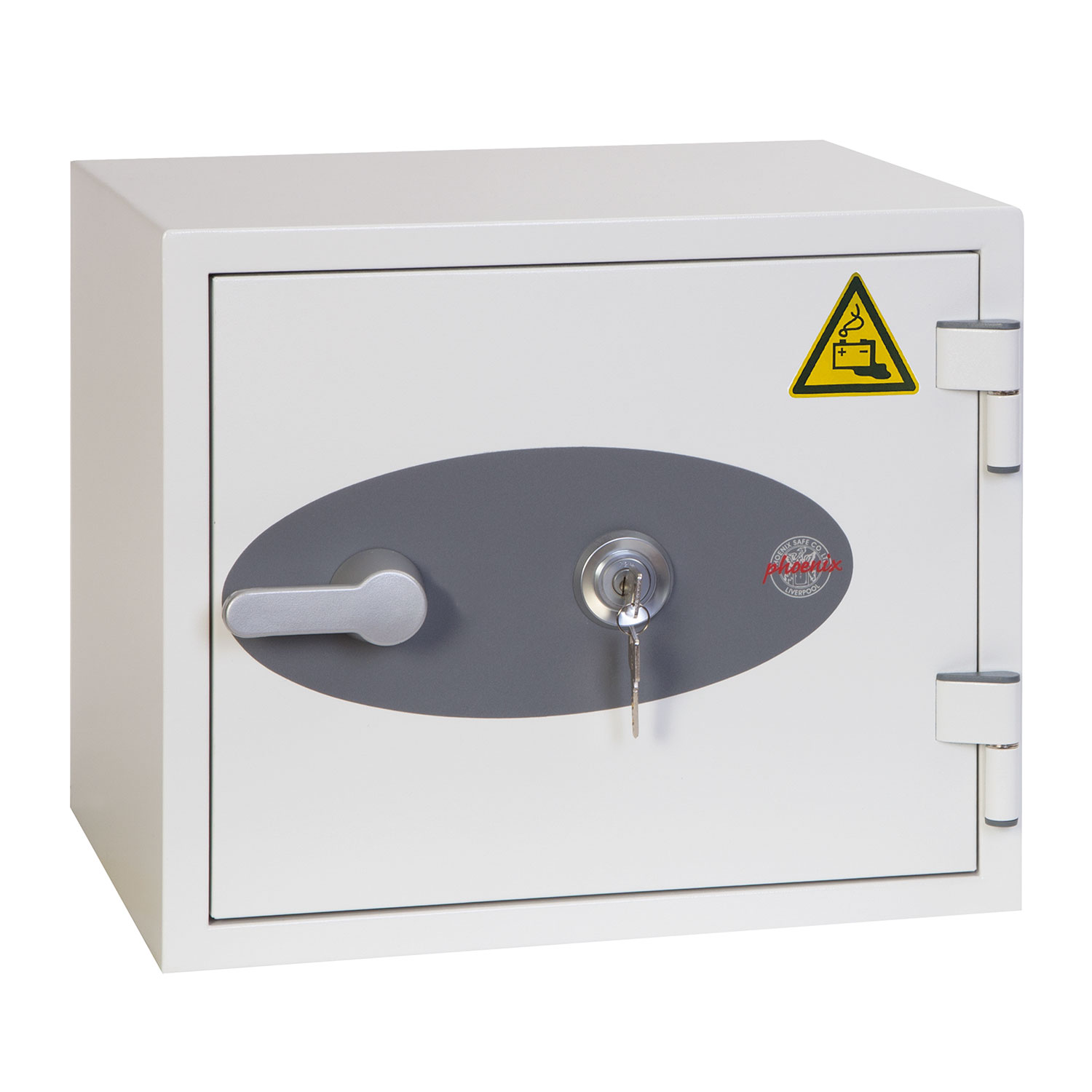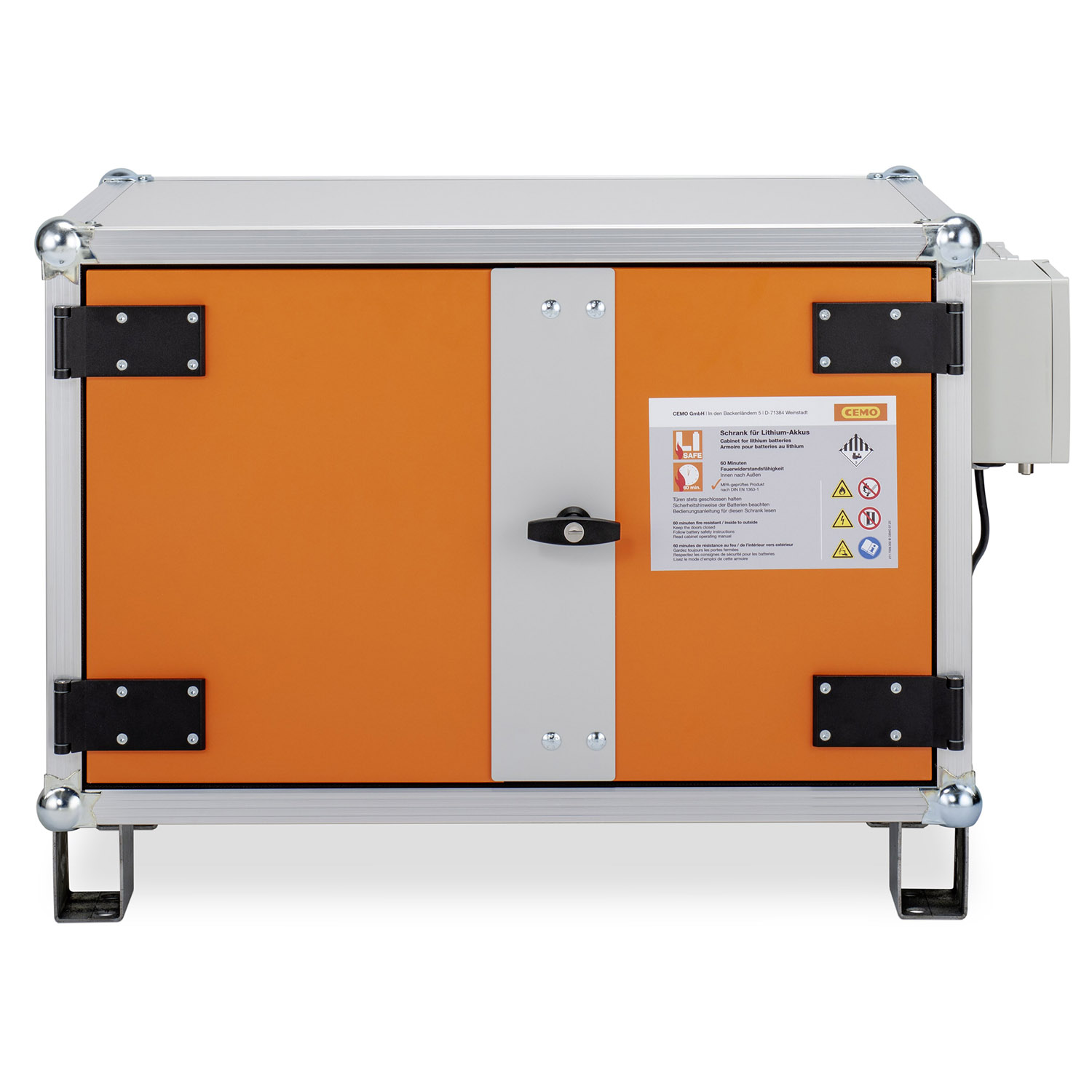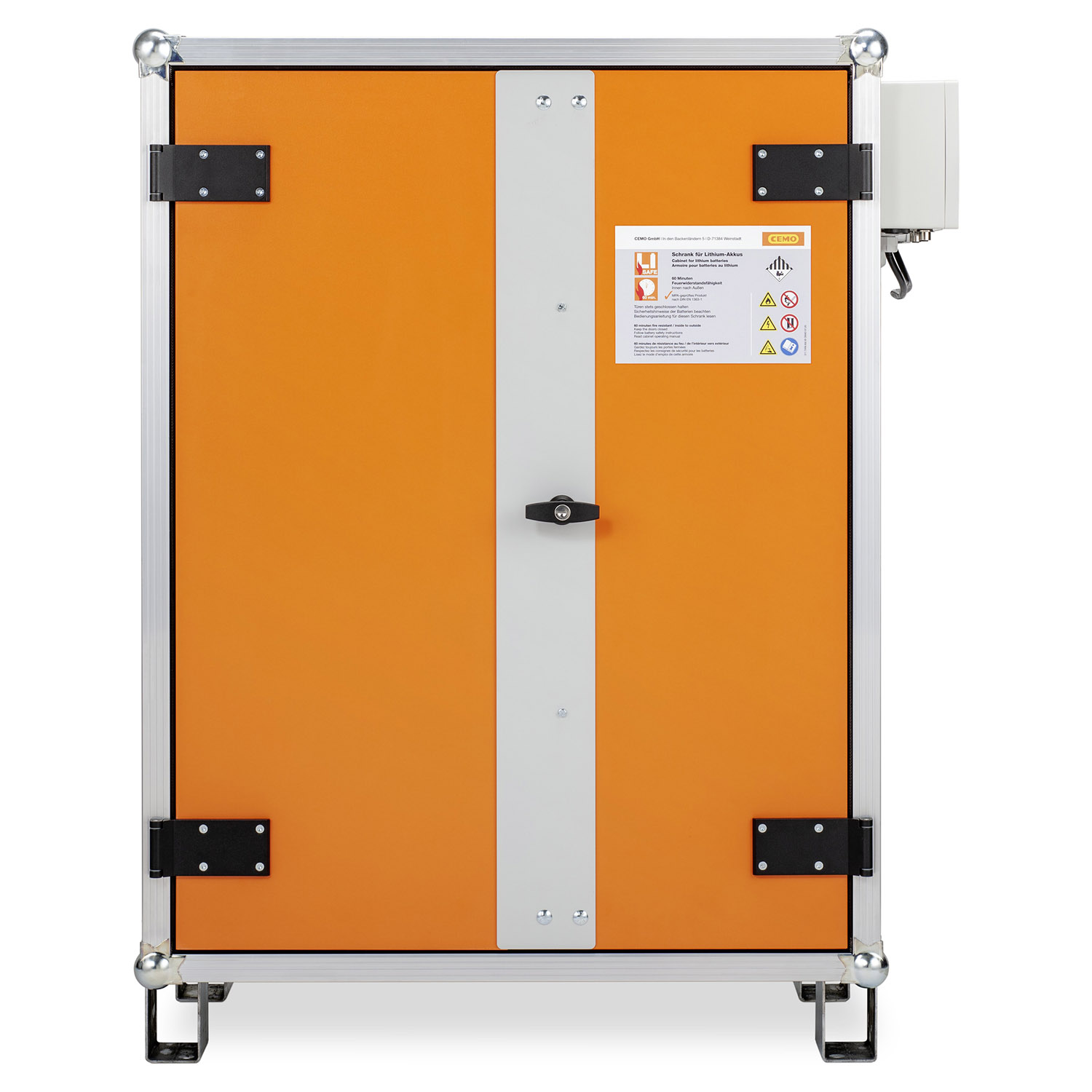-
Contact
Sales & Customer Service
0800 612 6537 support@safelincs.co.uk Live ChatDelivery Enquiries
0800 077 6149 - Resources
Fire & Safety Solutions
CALL OUR TEAM NOW 0800 612 6537
Lines open today 8am - 6pm
FREE Delivery
on marked products
Live Chat - Online
Instant help & Advice
Trade Discounts
and exclusive pricing
0% Credit Available
Open an account now
5 Star Customer Feedback
Lithium-Ion Fire Extinguishers & Containment
Lithium-ion batteries power everything from smartphones to electric vehicles. But when they fail, they create fires that standard extinguishers simply can't handle. These aren't ordinary blazes - they burn hotter, reignite unexpectedly, and release toxic gases that make them dangerous for both people and property. The dangers of lithium-ion fires Lithium-ion battery fires behave differently from typical fires. They undergo thermal runaway, a chain reaction where cells overheat and ignite neighbouring cells. Temperatures can reach 800°C, and the fire can reignite hours or even days later. How do lithium-ion fire extinguishers work? Specialist lithium-ion fire extinguishers use advanced suppression agents specifically designed to reach the source of the fire. The most effective contain aqueous vermiculite (AV) or other cooling agents that form a protective barrier around the battery. This barrier prevents oxygen from reaching the fire, stops thermal runaway, and significantly reduces the risk of reignition. Where are lithium-ion fire extinguishers essential? Any environment with lithium-ion batteries needs proper fire protection. Electric vehicle charging stations, battery storage facilities, warehouses storing electronic goods, and offices with multiple devices all face potential risks of lithium-ion fires. Even homes with e-bikes, power tools, or solar battery systems benefit from having the proper extinguisher nearby. What containment options are available? Fire extinguishers aren't the only solution. Containment systems, such as fire blankets and suppression kits, help control lithium-ion fires before they spread. These systems work by starving the fire of oxygen and isolating the fire to prevent thermal runaway from affecting nearby batteries or equipment. How do you choose the proper lithium-ion fire protection? Consider the size and type of batteries you're protecting. Smaller, portable extinguishers are well-suited for consumer electronics and small battery packs. The EV Fire Blanket may be suited for electric vehicles and industrial battery installations. The key is not just suppressing flames but preventing incidents before they escalate. Lithium-ion battery fires are notoriously difficult to tackle once they start, so prevention is the safest strategy. Having the right containment and isolation equipment in place helps manage batteries at risk of thermal runaway and reduces the chance of a dangerous fire developing. For detailed information on how to deal with lithium-ion battery fires, see our comprehensive guide on how to extinguish a lithium-ion battery fire. Your fire safety depends on having the right tools for the job. Browse our range of lithium-ion fire extinguishers and containment systems to find the protection that fits your specific needs. Don't wait until thermal runaway puts your people and property at risk - get the specialist fire safety equipment that can handle lithium-ion fires safely and effectively. Frequently Asked Questions (FAQs) Can I use a standard fire extinguisher to put out a lithium-ion battery fire? Standard fire extinguishers aren't designed for lithium-ion battery fires. These fires burn at extremely high temperatures and can reignite even after being extinguished. Traditional water, foam, or powder extinguishers may temporarily suppress flames, but they won't prevent thermal runaway or stop dangerous reignition. You need specialist lithium-ion fire extinguishers with cooling agents formulated explicitly for battery fires. What makes lithium-ion battery fires different from ordinary fires? Lithium-ion battery fires undergo thermal runaway, where overheating cells trigger a chain reaction that spreads to neighbouring cells. They reach temperatures over 1000°C, release toxic gases and are also prone to explosions. Unlike standard fires, they can reignite hours or days later because the internal battery components continue to smoulder. This makes them particularly dangerous and requires specialist suppression methods. Do lithium-ion fire extinguishers work on other types of fires? Many lithium-ion fire extinguishers also carry Class A ratings for ordinary combustible materials, such as wood, paper, and fabric. Always check the extinguisher's rating labels to confirm the types of fires it's approved for. Where should I install lithium-ion fire extinguishers? Install them in areas where lithium-ion batteries are stored, charged, or used regularly. This includes electric vehicle charging points, battery storage areas, warehouses with electronic goods, offices with multiple devices, and workshops with power tools. How do I know if my lithium-ion battery is about to catch fire? Early warning signs include unusual heat, swelling of the battery casing, or leaking fluids. You might also notice a strange chemical smell or see the battery changing colour. If you spot any of these signs - only if safe to do so - move the battery to a safe area away from flammable materials and have your specialist lithium-ion fire extinguisher ready. Don't attempt to charge or use a damaged battery.
Read more about lithium-ion fire extinguishers...
Lithco LB6 Lithium-Ion Battery 6ltr Fire Extinguisher - UltraFire
Designed specifically for use on rechargeable lithium-ion battery fires, the LB6 fire extinguisher satisfies modern fire risks in a cost-effective, multi-purpose solution.
- Designed for UPS systems, laptops, power tools, and bulk device chargers
- Heat dispersing, low-viscosity agent to penetrate battery casings
- Rigid applicator lance for enhanced control and user safety
- Third-party tested up to 360Wh battery capacity
P50 Service-Free Lithium-Ion AVD Fire Extinguishers
- Ideal for anywhere lithium-ion batteries are charged or stored.
- Save over 50% on your extinguisher servicing and maintenance costs
- Suitable for use on lithium-ion batteries, Class A fires, and live electrical equipment up to 1000 Volts
- 10-year guarantee and a 20-year lifespan
- CE marked and Kitemarked to BS EN3 by BSI
Write a review
Register your interest to be notified when this product becomes available.
Register InterestLithium Battery Fire Extinguisher - Lithco
- Designed for use on small home and office lithium powered devices
- Suitable for lithium batteries, Class A fires, and electrical equipment
- Ideal to keep close to where lithium-ion batteries are charged or stored
- Manufactured in accordance with BS 6165: 2019
Lithium-Ion Battery Fire Protection Box - CEMO Li-SAFE
- Transport and store lithium-ion batteries safely and securely
- Contain lithium-ion battery fires
- Impact resistant outer casing
- Carry handles provides easy transportation
- Available in three sizes
Lithco Fire Protection Pallet Cover
- Store and transport palletised lithium-ion products
- Easy application with Velcro fastening
- Suitable for mixed risks including lithium-ion batteries
- Capable of covering pallets sized 1100 x 1050 x 1250mm – other sizes available upon request
- Supplied in a hard-wearing bag with carry handle
Lithco Electric Vehicle Fire Blanket with Telescopic Poles
- Designed to deal with the severe and prolonged temperatures that result from EV battery fires
- Suitable for use as a 'fire break' to stop a fire spreading to other vehicles and buildings
- Certified to DIN Spec 91489:2024-11
- Independently tested by KIWA MPA Dresden
Electric Vehicle XL Fire Blanket - Brimstone
Quick to deploy, by the Fire Service, the Brimstone EV XL suppression blanket helps deprive the fire of oxygen, lower the temperature, and contain the amount of highly toxic smoke being released. Providing protection for nearby vehicles and property until it can be safely removed.
- Designed to quickly suppress an electrical vehicle fire and stop it spreading
- Multiple sizes to fit cars of all sizes, small vans, and forklifts
- Ideal for recovery services, charging stations, car parks, ferries, motor dealers, and car repairers
- Comes in a reinforced orange bag, with 'drag & go' pad
Electric Vehicle Standard Fire Blanket - Brimstone
The standard EV suppression blanket from Brimstone assists in the deprivation of oxygen, lowering temperature, and the containment of toxic smoke that is released. Available with extendable poles, to provide additional clearance between the Fire Service and your car.
- Ideal for recovery services, charging stations, car parks, and ferries
- Supplied in a reinforced orange carry bag
- Designed to quickly suppress an electrical vehicle fire
- Available with extendable deployment poles
Car Fire Blanket for Electric Vehicles - Bridgehill
Effective containment of fire and ejected debris from burning electric vehicles.
- Withstands and contains EV fires up to 1,600°C
- Suitable for cars of all sizes up to large SUV
- For locations with multiple cars or near other buildings
- Made using the same materials protecting space vehicles upon re-entry
Basic Storage and Charging Small Cabinet - CEMO LockEX
- Small basic lithium charging cabinet
- Supplied with 6 power sockets
- Equipped with an audible smoke alarm in case of a fire
- Cold smoke seals prevent toxic smoke and flames escaping
- Forklift access clearance (100mm) for positioning and removal of cabinet
Basic Storage and Charging Large Cabinet - CEMO LockEX
- Large basic lithium charging cabinet
- Supplied with 12 power sockets
- Equipped with an audible smoke alarm in case of a fire
- Cold smoke seals prevent toxic smoke and flames escaping
- Forklift access clearance (100mm) for positioning and removal of cabinet
Phoenix Battery Commander 1931 - Lithium-Ion Battery Safe
- 90 minutes fire protection
- Suitable for storing and charging lithium-ion batteries
- Available with key lock, electronic lock or fingerprint lock
- Capacity: 220 litres
- External dimensions (HxWxD): 1245 x 690 x 650mm
- Free delivery to your door
Phoenix Battery Commander 1932 - Lithium-Ion Battery Safe
- 90 minutes fire protection
- Suitable for storing and charging of lithium-ion batteries
- External dimensions (HxWxD): 1770 x 690 x 650mm
- Capacity: 338 litres
- Available with key lock, electronic lock or fingerprint lock
Phoenix Battery Commander 1934 - Lithium-Ion Battery Safe
- 90 minutes fire protection
- Available with key lock, electronic lock or fingerprint lock
- Suitable for storing and charging of lithium-ion batteries
- Capacity: 626 litres
- External dimensions (HxWxD): 1770 x 1125 x 650mm
Premium Storage and Charging Small Cabinet - CEMO LockEX
- Small premium lithium charging cabinet
- Supplied with 6 power sockets
- Equipped with a smoke alarm to link with your fire alarm panel
- Cold smoke seals prevent toxic smoke and flames escaping
- Forklift access clearance (100mm) for positioning and removal of cabinet
Premium Storage and Charging Large Cabinet - CEMO LockEX
- Large premium lithium charging cabinet
- Supplied with 12 power sockets
- Equipped with an integrated smoke alarm to be linked to a fire alarm panel
- Cold smoke seals prevent toxic smoke and flames escaping
- Forklift access clearance for positioning cabinet
Phoenix Battery Fighter 0440 Series - Fire and Security Safe
- 120 minutes fire protection for paper
- Suitable for storing and charging lithium-ion batteries
- Insurance rating: £2,500, £25,000 valuables
- Available with key lock, electronic lock or fingerprint lock
- Capacity: 63 or 84 litres
- External dimensions: 640 x 500 x 500mm or 820 x 520 x 520mm
- Free delivery to your door (7 - 10 working days)
Phoenix Battery Titan 1280 Series - Fire and Security Safe
- 60 minutes fire protection for paper
- Suitable for storing and charging lithium-ion batteries
- Insurance rating: £2,000, £20,000 valuables
- Available with key lock, electronic lock or fingerprint lock
- Capacity: 19, 25 or 36 litres
- External dimensions: 360 x 410 x 365mm / 410 x 450 x 430mm / 515 x 400 x 440mm
- Free delivery to your door (7-10 working days)
Premium Plus Storage and Charging Small Cabinet - CEMO LockEX
- Small premium plus storage and charging cabinet for lithium batteries
- With 6 power sockets to charge multiple devices at once
- Integrated smoke alarm – wired into the buildings fire alarm panel
- Cold smoke seals prevent toxic smoke and flames from escaping
- Forklift access clearance (100mm) for positioning and removal of cabinet
Premium Plus Storage and Charging Large Cabinet - CEMO LockEX
- Large premium plus lithium charging cabinet
- Supplied with 12 power sockets
- Equipped with integrated smoke alarm in case of an incident
- Fitted with cold smoke seals prevent toxic smoke and flames escaping
- Forklift access clearance for positioning and removal
How do you put out a lithium-ion battery fire?
Lithium-ion battery fires require specialised approaches due to their unique challenges. To effectively tackle these fires, use lithium-ion battery fire extinguishers specifically designed for the task. Lithium-ion batteries can reach extremely high temperatures during a fire, often exceeding 1000°C, making them difficult to control and extinguish. Moreover, the risk of re-ignition remains even after the initial flames are extinguished, as battery cells can continue to smoulder and reignite hours or days later.
Lithium-ion battery fire extinguishers are equipped with specialised agents tailored to address the properties of lithium-ion fires. These extinguishers often feature water-based solutions with additives that enhance heat absorption and minimise the risk of re-ignition. The formulation of these agents helps cool the battery rapidly and efficiently, preventing it from reaching temperatures that could lead to further combustion.
To ensure reliability, battery fire extinguishers undergo rigorous testing to meet stringent safety standards. This thorough testing confirms their effectiveness in handling the extreme conditions associated with lithium-ion battery fires.
Lithium battery safety
Ensuring lithium battery safety is vital due to the unique fire risks associated with lithium-ion batteries. These batteries, commonly used in electronic devices, can pose significant hazards if not properly managed. To protect against these risks, having the right equipment is crucial, and lithium-ion battery fire extinguishers are specifically designed to address these challenges.
Our fire extinguishers are thoroughly tested to ensure they meet rigorous safety standards and perform reliably when needed. Investing in these tailored extinguishers enhances your ability to manage lithium battery fires safely and efficiently.
Lithium-Ion Battery Containment Boxes and Cabinets
Lithium-ion containment boxes and cabinets allows for safe storage and transportation of lithium-ion batteries, to protect against fire risks and explosions. Li-ion batteries are becoming increasingly common, therefore it’s essential to prevent potential fire hazards due to the risks of overheating, thermal runaway, and degradation that can lead to fires or explosions. When batteries show signs of failing – such as overheating, swelling, or leaking – containment solutions isolate the battery which ensures a fire or explosion risk is contained. For industries handling large quantities of lithium-ion batteries, these cabinets offer secure storage.




















